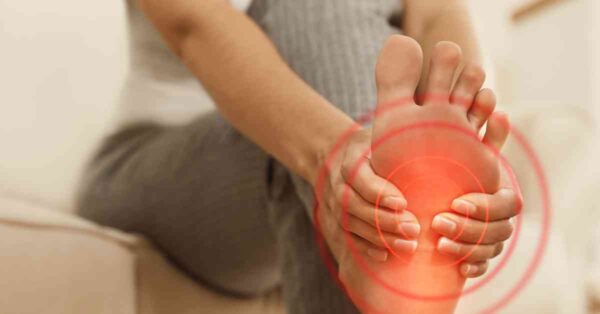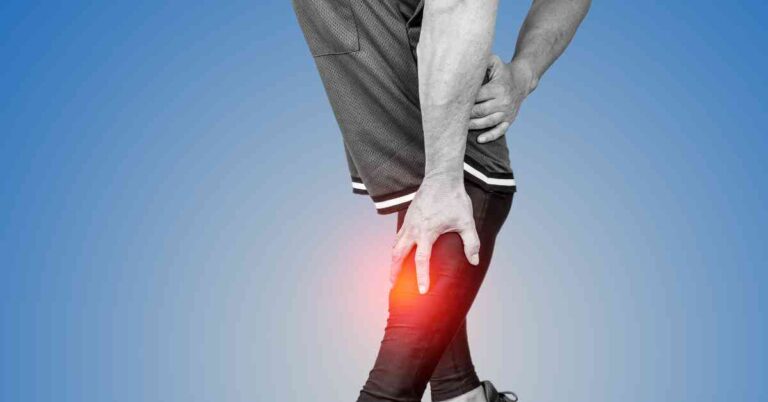Tight calf muscles and foot pain can significantly hinder your daily life, making even simple activities challenging. This comprehensive guide will explore the causes, home remedies, and treatment options for tight calf muscles and foot pain. Additionally, we will share highly-rated products on Amazon that can offer relief. We’ll also discuss when to see a doctor and delve into common treatments for this condition, all based on high-quality sources like nih.gov.
Causes of Tight Calf Muscles and Foot Pain
Understanding the causes of tight calf muscles and foot pain is essential for effective treatment. These causes can include:
- Overuse: Exercising excessively or engaging in repetitive activities can lead to muscle fatigue, tightness, and pain. This is common among runners, dancers, and other sports involving continuous leg movement.
- Inadequate stretching: Failing to stretch your muscles properly before and after physical activities can contribute to muscle tightness and discomfort.
- Poor footwear: Shoes that lack proper support and cushioning or are ill-fitting can cause foot pain and contribute to tight calf muscles.
- Flat feet or high arches: These structural foot abnormalities can place extra strain on calf muscles, leading to tightness and pain.
- Muscle imbalances: Weak or tight muscles in one area, such as your hamstrings or quadriceps, can cause compensatory tightness and pain in your calf muscles and feet.
Home Remedies for Tight Calf Muscles and Foot Pain
To find relief, try these simple yet effective home remedies:
- Stretching: Perform calf stretches, such as standing calf stretches and seated calf stretches, regularly to help reduce muscle tightness and alleviate pain.
- Massage: Use your hands, a tennis ball, or a massage tool to massage your calves and feet gently. This can promote relaxation and ease muscle tension.
- Heat and ice therapy: Apply a heating pad or warm towel to tight muscles for 20 minutes, followed by an ice pack for another 20 minutes to reduce inflammation and alleviate pain.
- Elevation: Keep your legs elevated, ideally above the level of your heart, to help reduce swelling and discomfort in your calves and feet.
- Rest: Allow your muscles to recover and heal by taking breaks from activities that exacerbate pain and ensuring adequate sleep.
The best products for tight leg muscles and foot pain

For additional support, consider these highly-rated products on Amazon that can help relieve tight calf muscles and foot pain:
- Compression socks: These specially designed socks improve circulation, reduce swelling, and support your calves and feet. They come in various compression levels and can be worn throughout the day.
- Foam rollers: A foam roller is a versatile tool that can help massage and stretch tight calf muscles. Rolling out your calves can improve flexibility and alleviate pain.
- Orthotic insoles: Orthotic inserts can provide additional arch support, improve foot alignment, and help alleviate foot pain caused by high arches or flat feet.
- Massage tools: Massage guns, leg massagers, and other massage tools can effectively combat leg and foot pain.
Topical products to consider:
- Topricin Foot Pain Relief Cream: This homeopathic cream is explicitly formulated for foot pain relief and contains natural ingredients that help reduce inflammation and promote healing.
- Biofreeze Pain Relief Gel: Biofreeze is a popular, menthol-based gel that provides a cooling sensation to alleviate muscle and joint pain. It’s effective for temporary relief from leg and foot pain caused by overuse or strain.
- Penetrex Pain Relief Therapy: Penetrex is a topical cream that targets inflammation in muscles, joints, and nerves. It contains natural ingredients such as arnica, vitamin B6, and MSM to help alleviate leg and foot pain.
- Tiger Balm: This well-known, herbal-based balm contains ingredients like camphor, menthol, and clove oil, which help soothe sore muscles and provide pain relief. It’s available in various strengths to suit individual needs.
- Voltaren Arthritis Pain Gel: a topical gel containing diclofenac, a nonsteroidal anti-inflammatory drug (NSAID). It effectively reduces inflammation and pain in muscles and joints, including leg and foot pain related to arthritis.
Other considerations about tight calf muscles and foot pain:
- Underlying medical conditions: In some cases, tight calf muscles and foot pain could be a symptom of a medical condition, such as peripheral artery disease, deep vein thrombosis, or nerve damage (neuropathy). If you suspect that your pain might be related to a more severe issue, it’s essential to consult your doctor for a thorough evaluation.
- Importance of hydration: Staying well-hydrated can help prevent muscle cramps and tightness. Dehydration can lead to an imbalance in electrolytes essential for proper muscle function. Be sure to drink enough water, especially during and after physical activities.
- Nutrition: Eating a well-balanced diet with essential nutrients like calcium, potassium, and magnesium can help maintain muscle health and prevent muscle tightness and pain. Incorporating anti-inflammatory foods like leafy greens, berries, and fatty fish may also help reduce inflammation and alleviate pain.
- Proper exercise technique: Incorrect techniques can contribute to tight calf muscles and foot pain. Ensure you’re using proper form during physical activities, and consider working with a personal trainer or coach to learn the correct techniques.
When to See a Doctor
It’s essential to consult a doctor if you experience any of the following:
- Severe pain or swelling that makes it difficult to walk or bear weight on the affected foot
- Pain that doesn’t improve with rest, home remedies, or over-the-counter pain relievers
- Signs of infection, such as redness, warmth, or pus in the affected area
- Persistent tightness or pain that interferes with your daily activities
Common Treatments for Tight Calf Muscles and Foot Pain
Based on your specific condition, your doctor may recommend one or more of the following treatments:
- Physical therapy: A physical therapist can help you strengthen and stretch your calf muscles to reduce pain and prevent future issues. They can also address muscle imbalances and provide guidance on proper footwear and exercise techniques.
- Medication: Over-the-counter pain relievers, such as naproxen, ibuprofen, or prescription anti-inflammatory drugs, can help alleviate pain and inflammation associated with tight calf muscles and foot pain.
- Custom orthotics: A podiatrist may prescribe custom orthotics to provide proper arch support, correct foot alignment, and alleviate pain caused by flat or high arches.
- Supportive footwear: Wearing shoes with adequate cushioning, arch support, and a proper fit can help reduce calf muscle tightness and foot pain. Your doctor or a specialist may recommend specific shoe brands or styles to address your needs.
- Muscle relaxants: Sometimes, your doctor may prescribe muscle relaxants to help alleviate severe muscle tightness and pain.
Conclusion
Tight calf muscles and foot pain can be frustrating, but you can find relief with the right knowledge, resources, and strategies. Understanding the causes, trying home remedies, utilizing high-quality products, and seeking professional help will enable you to manage your discomfort effectively. Always consult a doctor if your pain is severe, persistent, or not improving with self-care. With the right approach, you can overcome tight calf muscles and foot pain and get back to enjoying your daily activities.
Find more stories on the blog.
References:
- American Academy of Orthopaedic Surgeons (AAOS) – Foot Pain: https://orthoinfo.aaos.org/en/diseases–conditions/foot-pain/
- National Institute of Neurological Disorders and Stroke (NINDS) – Peripheral Neuropathy Fact Sheet: https://www.ninds.nih.gov/Disorders/Patient-Caregiver-Education/Fact-Sheets/Peripheral-Neuropathy-Fact-Sheet
- American College of Foot and Ankle Surgeons (ACFAS) – Arch Pain: https://www.foothealthfacts.org/conditions/arch-pain
- American Physical Therapy Association (APTA) – The Importance of Stretching: https://www.choosept.com/resources/detail/importance-of-stretching
- Centers for Disease Control and Prevention (CDC) – How much physical activity do adults need?: https://www.cdc.gov/physicalactivity/basics/adults/index.htm
- National Center for Biotechnology Information (NCBI) – Stretching to prevent or reduce muscle soreness after exercise: https://www.ncbi.nlm.nih.gov/pmc/articles/PMC3588663/
- National Center for Biotechnology Information (NCBI) – Effects of Massage on Muscular Strength and Proprioception After Exercise-Induced Muscle Damage: https://www.ncbi.nlm.nih.gov/pmc/articles/PMC4527549/
- National Center for Biotechnology Information (NCBI) – The role of nutrition in preventing exercise-induced muscle damage in young, healthy individuals: https://www.ncbi.nlm.nih.gov/pmc/articles/PMC6680717/




